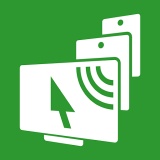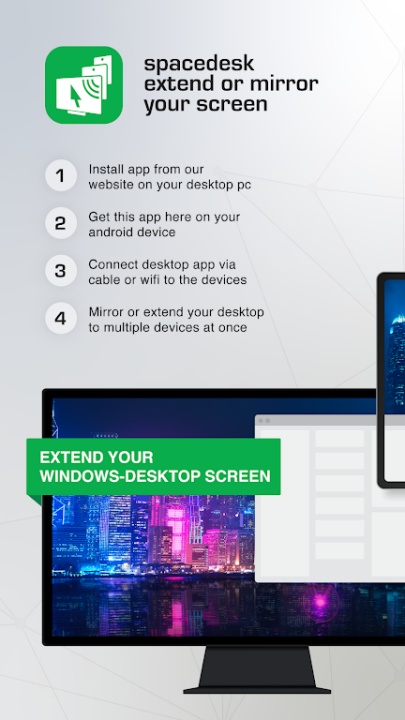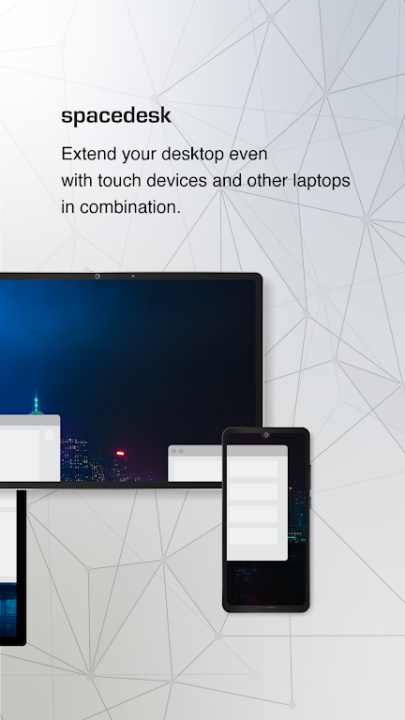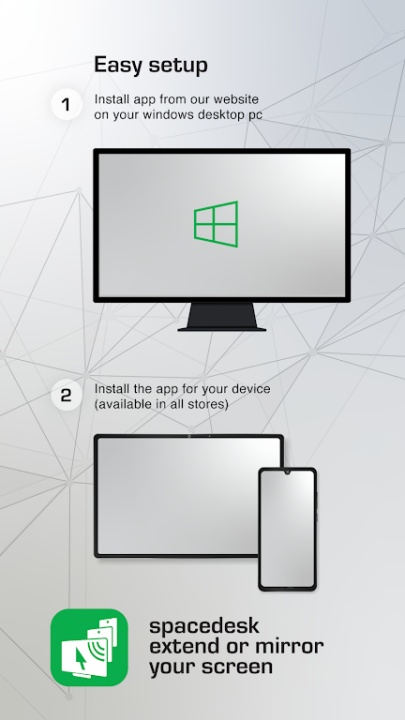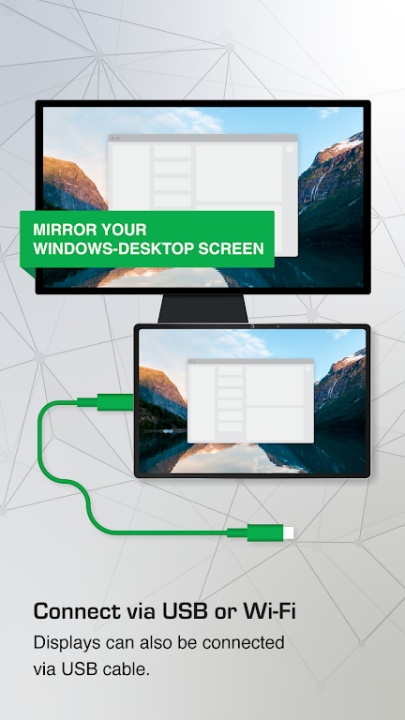spacedesk transforms your Windows PC into a powerful multi-display server by allowing Android devices to act as wireless or wired extension screens. Designed for seamless mirroring, second display setups, and creative workflows, spacedesk supports USB, LAN, and Wi-Fi connections to deliver low-latency desktop duplication and streaming. Whether you're expanding your desktop workspace, casting to a television, or turning your tablet into a drawing pad with stylus support, spacedesk offers performance-focused versatility in both professional and personal environments.
Desktop Extension and Display Mirroring
- Extend or duplicate your Windows desktop onto smartphones, tablets, or other Android devices
- Use additional displays wirelessly via Wi-Fi or directly through USB and Ethernet
- View presentations, videos, or applications on multiple screens simultaneously
Remote Access and Control
- Access your Windows PC remotely from Android devices using touch, mouse, or keyboard input
- Control primary computer functions including navigation, typing, and pen input from the connected screen
- Ideal for mobile productivity setups, software KVM switching, or home-office scenarios
Wireless and Wired Display Performance
- Supports USB and LAN connections for high-speed, zero-latency interaction
- Optimized for smooth video streaming, screen mirroring, and graphical responsiveness
- Bypasses routers with direct hotspot configurations for peak performance
Graphics Tablet and Input Functionality
- Use an Android tablet as a digitizer or sketchbook for drawing in graphic applications
- Supports pressure-sensitive stylus pens for precision artwork and design tasks
- Transforms mobile devices into input terminals for Windows editing software
Creative Use Cases and Configurations
- Cast to TVs or projectors for media presentations or entertainment
- Configure multi-angle video walls and rotated displays for installations and design labs
- Build portable multi-monitor setups for travel with side-by-side device arrangement
Interface and Control Options
- Customize display layout with support for landscape and portrait orientations
- Enable touch functionality, mouse pointers, keyboard control, and external audio playback
- Switch between modes for screen casting, remote viewing, and input terminal use
Technical Compatibility
- Supports Windows 11, 10, and 8.1 PCs as the primary display server
- Compatible with Android devices running version 4.1 and above
- Requires installation of spacedesk Driver on Windows and spacedesk Viewer on Android
- Operates over TCP/IP network protocol with no need for internet access
Setup Process
- Download and install spacedesk Driver on the Windows host machine
- Install spacedesk Viewer app on the Android device
- Connect via USB or LAN to start desktop extension, remote viewing, or mirroring
- For best performance, configure devices on a local hotspot or wired connection
Frequently Asked Questions
Q: Can I extend my Windows desktop to my Android tablet?
Yes, spacedesk supports desktop extension to Android devices via USB, LAN, or Wi-Fi.
Q: Is internet required to use spacedesk?
No, local network connections or direct USB links are sufficient.
Q: Can I use my tablet as a drawing input device?
Yes, spacedesk supports stylus input for graphics applications.
Q: Does spacedesk support dual-monitor setups?
Yes, multi-monitor configurations are fully supported.
Q: Are Apple Mac systems compatible with spacedesk?
No, spacedesk only works with Windows-based PCs.
Q: Is spacedesk suitable for remote control and input?
Yes, it supports touchscreen, mouse, keyboard, and stylus control.
Q: What connection type offers best performance?
USB or wired LAN provide the highest speed with minimal latency.
Q: Can I stream audio along with the screen?
Yes, spacedesk supports screen and audio streaming.
Version History
v2.1.25 —— 7 Nov 2025
Bug fixes—addressed multiple issues to ensure smoother operation across supported Android devices
v2.1.24 —— 7 Sep 2025
Bug fixes—minor stability improvements and compatibility adjustments
v2.1.20 —— 17 May 2025
Bug fixes—continued refinements for reliable mirroring and display functionality
